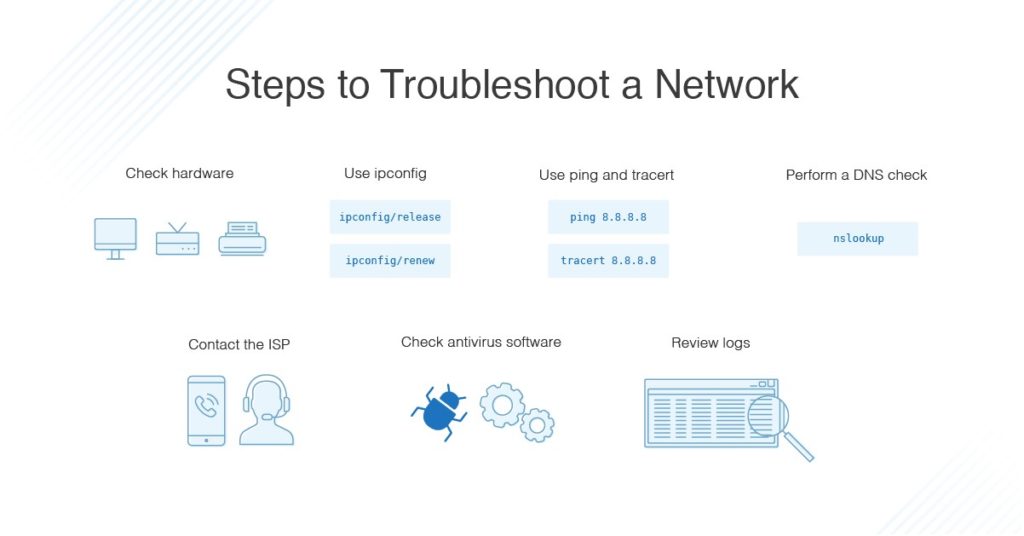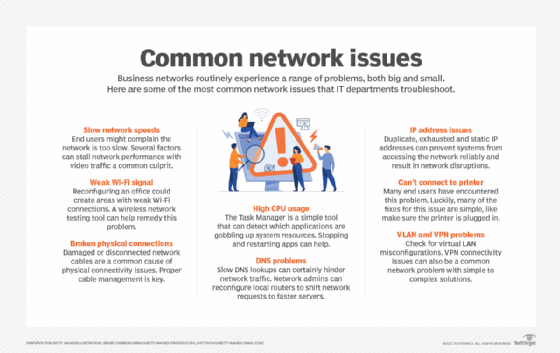Introduction
Network issues can be frustrating and disruptive, especially in today’s highly connected world. Whether you are experiencing slow internet speeds, intermittent connectivity, or difficulty connecting to certain websites or devices, it’s important to understand common network issues and how to troubleshoot them. In this blog post, we will explore some of the most common network problems and provide you with practical solutions to resolve them.
1. Slow Internet Speed
Slow internet speed is a common network issue that can significantly impact your online experience. To troubleshoot this problem:
- Restart your modem and router.
- Check for any physical obstructions or interference.
- Ensure that your devices are not downloading or uploading large files in the background.
- Consider upgrading your internet plan or contacting your service provider for assistance.
2. Intermittent Connection
Experiencing intermittent connection drops can be frustrating, especially during important tasks. Follow these steps to troubleshoot this issue:
- Check all physical connections and ensure they are secure.
- Restart your modem and router.
- Update your router’s firmware to the latest version.
- Move your router to a central location to improve signal strength.
- Consider using a wired connection for more stability.
3. Limited or No Connectivity

If you are unable to connect to the network at all, try these troubleshooting steps:
- Restart your modem and router.
- Check if other devices can connect to the network.
- Disable and re-enable your network adapter.
- Update your network adapter drivers.
- Reset your TCP/IP settings.
4. DNS Resolution Issues
DNS (Domain Name System) resolution issues can prevent you from accessing websites. Here’s how to troubleshoot this problem:
- Restart your modem and router.
- Flush your DNS cache.
- Change your DNS server to a public.
Summary
Network issues can arise due to various factors, including hardware problems, software conflicts, or configuration errors. By familiarizing yourself with these common issues and troubleshooting techniques, you can save time and frustration when faced with network problems. This blog post will cover topics such as:
- Slow internet speeds and how to improve them
- Intermittent connectivity and ways to stabilize your network
- Troubleshooting common Wi-Fi problems
- Troubleshooting network connectivity on specific devices
- Resolving DNS and IP address conflicts
By following the troubleshooting steps outlined in this blog post, you will be better equipped to identify and resolve network issues efficiently, ensuring a smooth and uninterrupte see this page d online experience.
- Q: Why is my internet connection slow?
- A: Slow internet connection can be caused by various factors such as network congestion, distance from the router, or issues with your ISP. To troubleshoot, try restarting your router, minimizing the number of connected devices, or contacting your ISP for assistance.
- Q: Why am I unable to connect to the network?
- A: If you are unable to connect to the network, check if your device’s Wi-Fi is turned on and if you are within range of the network. Ensure you have entered the correct password, restart your device, or try connecting to a different network to identify the issue.
- Q: Why do I keep getting disconnected from the Wi-Fi?
- A: Frequent disconnections from Wi-Fi can be due to interference from other devices, outdated router firmware, or signal range issues. To troubleshoot, move closer to the router, update the router firmware, or try changing the Wi-Fi channel settings.
- Q: Why am I experiencing intermittent network connectivity?
- A: Intermittent connectivity can be caused by faulty cables, loose connections, or outdated network drivers. Check all cable connections, restart your devices, and ensure your network drivers are up to date to resolve the issue.
- Q: Why can’t I access certain websites or online services?
- A: Inability to access specific websites or services can be due to DNS issues, firewall restrictions, or website/server problems. Try clearing your browser cache, disabling the firewall temporarily, or contacting the website/service provider for further assistance.

Welcome to my website! My name is Levi McBryde, and I am a dedicated professional Hardware Upgrade Technician with a passion for Network Solutions, Hardware Upgrades, Augmented Reality, and Game Development. With years of experience in the field, I am committed to providing top-notch services and solutions to meet your technological needs.

